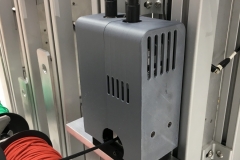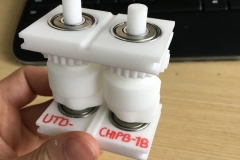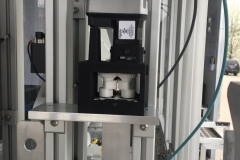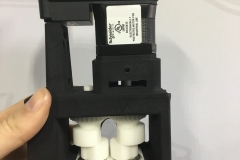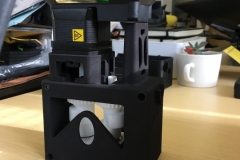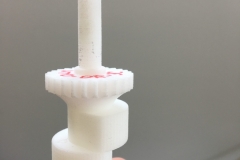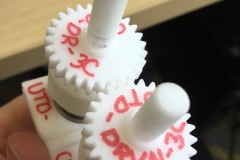
Overview
Dates: December 2018 to April 2019
This device was developed in an effort to reduce the error rate of the UNEEKBOT. The device pulls cord through a cammed roller at particular times during the robot’s operation.
My Role
The idea for the UTD came to me while at a UNEEKBOT event in the Shibuya district in Tokyo. I proposed the project to my boss at the time and then managed the funds to make it happen. I performed the design of the mechanical frame, and the design of the software running on the UTD itself. I also wrote the code that would allow the UTD to interface with the UNEEKBOT.
Process
Mechanical Design
The UTD was designed in SOLIDWORKS, and 3D printed out of several different materials: Nylon, Nylon Multi Jet Fusion from HP, and PLA. There are also bearings and allen screws in the construction as well as a Lexium MDrive Motor from Schneider Electric.
I tested out several 3D printing materials for the components, including aluminum, and bronze before deciding to go with Nylon MJF. I decided to go with this material due to its rigidity and its resistance to creep. This was important because I would be press fitting bearings into the material.

Code
There are two parts to the code: the robot controller code, and the onboard MDrive Motor code. I had to write both so that they communicated through socket messaging. The motor was programmed in MCODE, which is basically assembly for the motor. The ABB robot controllers communicate in RAPID, and so that is what I used to write the controller code.
Outcome
The UTD was effective in preventing the UNEEKBOT from crashing. I was able to decrease the time I spent getting involved in the robot by 50%. I completed the device in early 2019, and we used the device on the remainder of our marketing stops that year.
